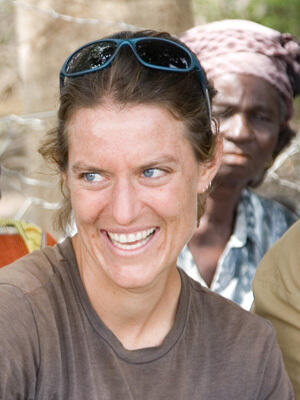Africa's Food Systems in 2030
Paul Collier will talk about how to manage the difference between helpful and damaging commercialisation, and puts forth three arguments. First, we need to face the tough reality that African food production has failed to keep pace with demand over the course of several decades, suggesting that there is a deep problem with respect to innovation and investment given the way African agriculture has been organised. Second, we need to accept that climate change, population growth, and income gains from natural resources will all stress this imbalance further: the prospect is for widening food deficits with business as usual. Third, two major changes are afoot. Globally, the model of commercial tropical agriculture pioneered in Brazil has demonstrated that output can be raised very substantially by changing the mode of organisation. Africa is now starting to open land markets to large foreign management. Superficially this looks like Brazil2, but it may instead be a wave of speculative acquisitions triggered by the price peaks of 2008.
Collier is the Director of the Centre for the Study of African Economies and Professor of Economics and Public Policy at the Blavatnik School of Government, Oxford University. He is currently Advisor to the Strategy and Policy Department of the IMF, advisor to the Africa Region of the World Bank; and he has advised the British Government on its recent White Paper on economic development policy. He has been writing a monthly column for the Independent, and also writes for the New York Times, the Financial Times, the Wall Street Journal, and the Washington Post. His research covers the causes and consequences of civil war; the effects of aid and the problems of democracy in low-income and natural-resources rich societies.
Derek Byerlee's talk will lay out a number of models of inclusive agribusiness growth, grouped into three categories (i) institutional arrangements for improving productivity of smallholders operating in spot markets, (ii) various types of contract farming arrangements, and (iii) large-scale farms that generate jobs and/or include community equity shares. The institutional and policy context as well as commodity characteristics that favor these models are discussed within a simple transactions cost framework. He will also discuss cross-cutting policy priorities to enable the growth of commercial agriculture and agribusiness. These include continuing reforms to liberalize product and input markets, access to technology and skills, stimulating financial and risks markets, securing land rights, and investment in infrastructure through public-private partnerships.
Byerlee has dedicated his career to agriculture in developing countries, as a teacher, researcher, administrator and policy advisor. He has lived and worked for a total of 20 years in the three major developing regions-Africa, Asia, and Latin America. After beginning in academia at Michigan State University, he spent the bulk of his career at the International Maize and Wheat Improvement Center (CIMMYT). There as a economist and research manager he made notable contributions in forging a new spirit of collaboration between scientists, economists and farmers. He also published widely on efficiency of research systems, spillovers, and sustaining productivity in post green revolution agriculture. After joining the World Bank in 1994, he has applied his experience of research systems to finding innovative approaches to funding and organizing agricultural research, including emerging challenges in biotechnology policy. Since 2003, he has provided strategic direction and led policy world for the agricultural and rural sector in the World Bank.





